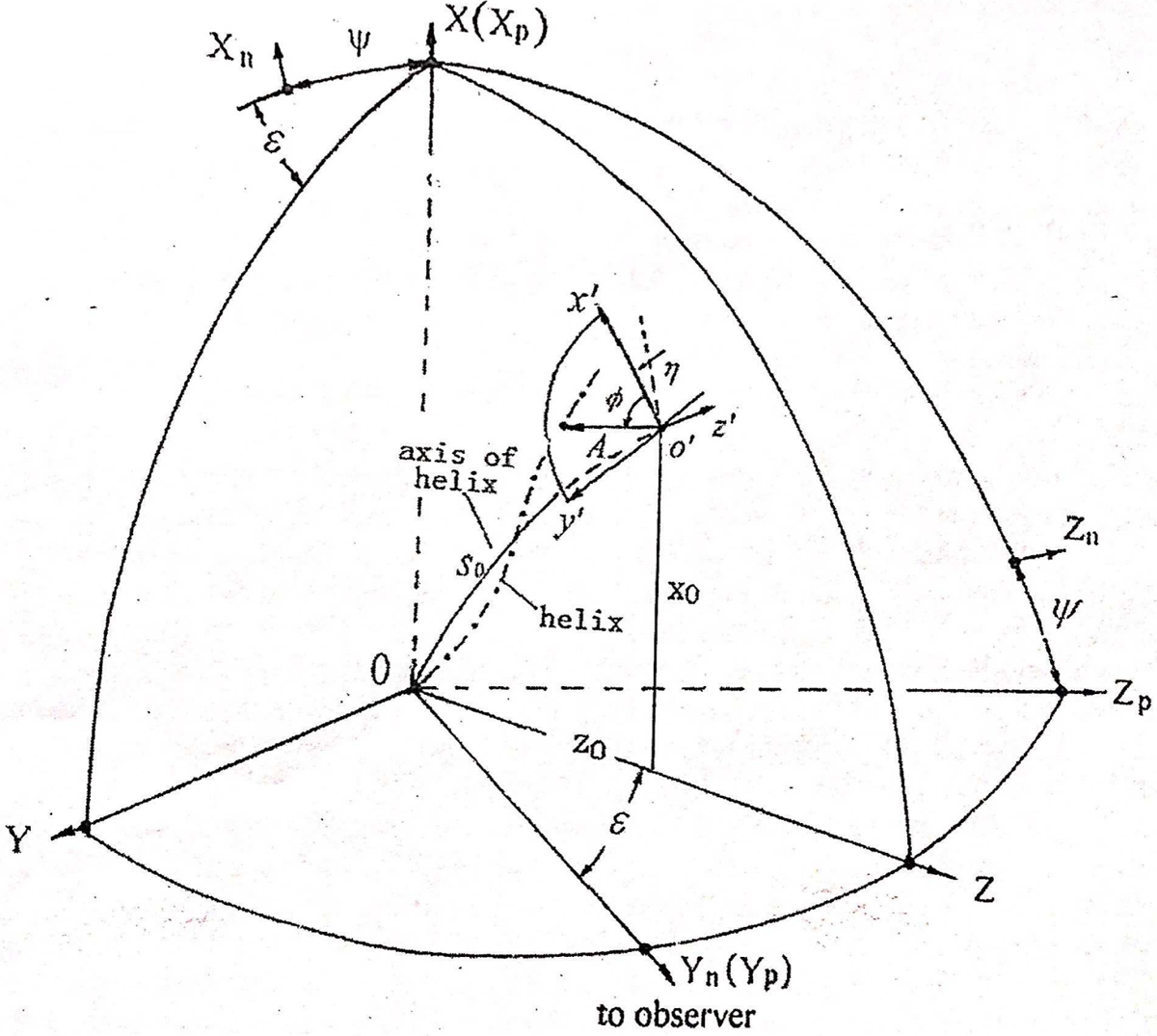Fig. 1.

Download original image
Geometry of the precession helical trajectory model. Superluminal knots move along a helical trajectory around the jet axis defined by the function x0(z0) in the plane (X, Z), having an amplitude A(s0) and phase ϕ(s0) defined in the coordinate system (x′, y′, z′). Through transformation among the coordinate systems, the apparent trajectory and the kinematic parameters (bulk Lorentz factor, Doppler factor, apparent velocity, and viewing angle) of a knot can be derived from its spatial trajectory and spatial kinematics by using the formulas given in Sect. 2.
Current usage metrics show cumulative count of Article Views (full-text article views including HTML views, PDF and ePub downloads, according to the available data) and Abstracts Views on Vision4Press platform.
Data correspond to usage on the plateform after 2015. The current usage metrics is available 48-96 hours after online publication and is updated daily on week days.
Initial download of the metrics may take a while.


